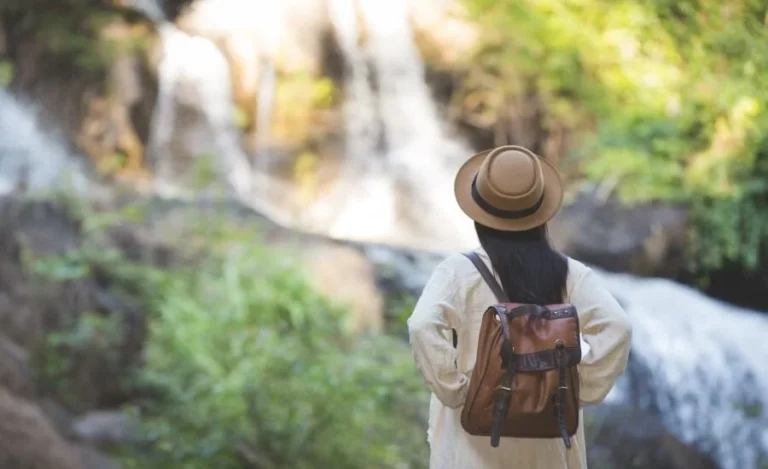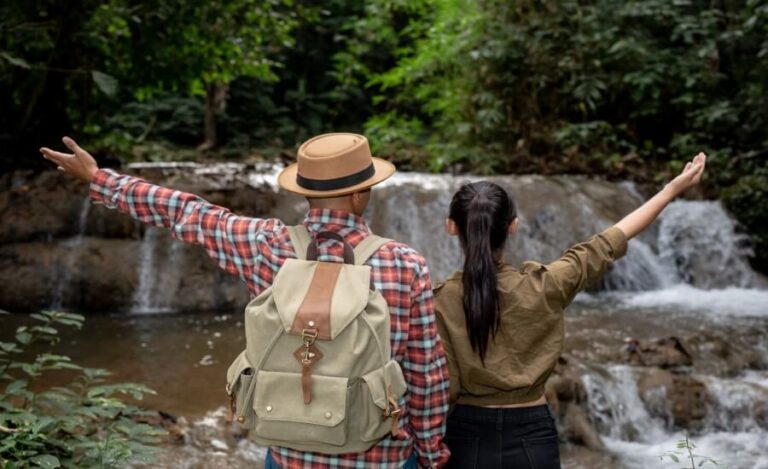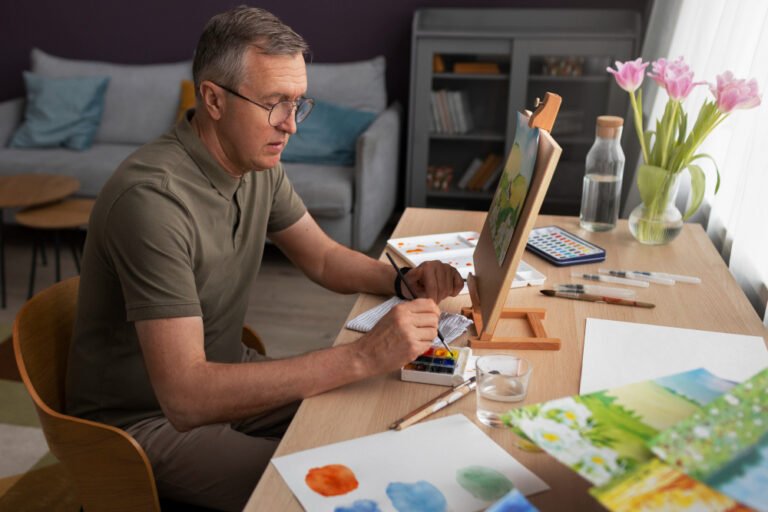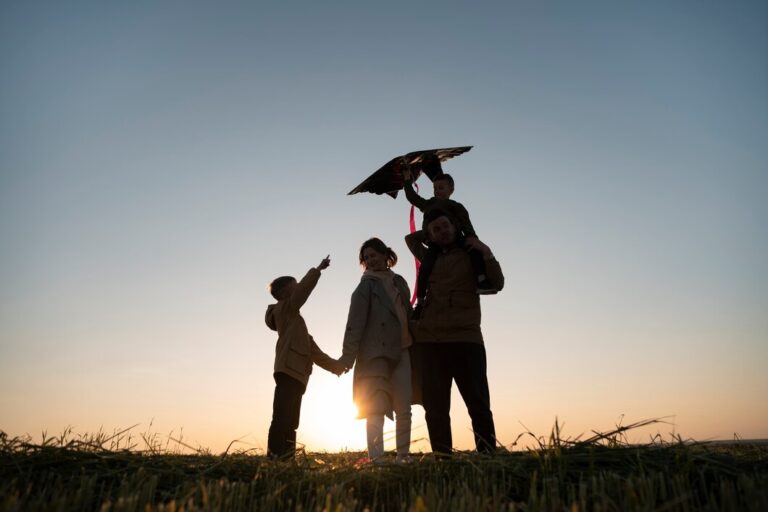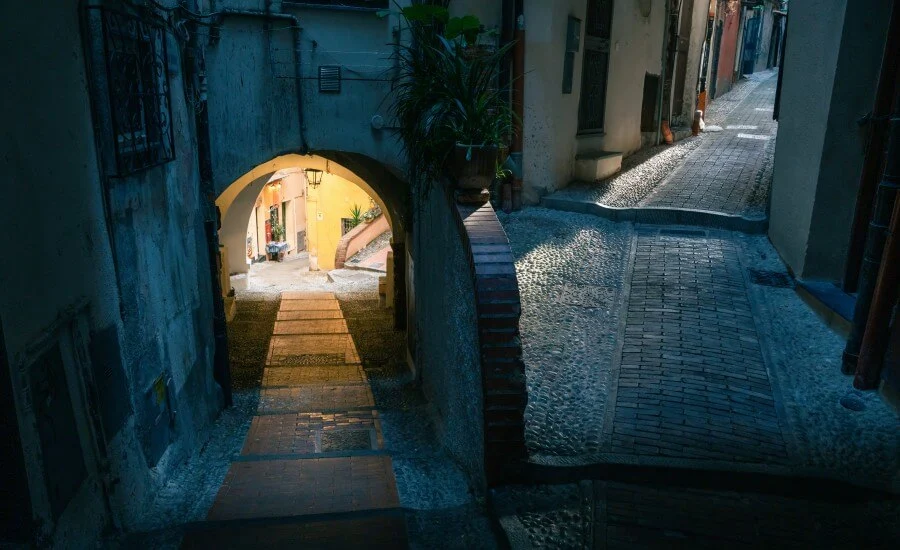
Picture yourself in an ancient city – perhaps the bustling lanes of Vadodara’s old quarter, the ghats of Varanasi, or the timeworn streets of Rome. The air hums with history. What’s the typical approach? A map in hand, a checklist of sights, rushing from one monument to another, camera clicking, maybe half-listening to a guide while scrolling through notifications. We ‘see’ the sights, but do we truly experience the place? Do we feel the echoes of centuries under our feet, or notice the subtle stories etched into weathered stone? Often, in our haste to consume history, we miss its heartbeat.
There’s a richer, more profound way to connect with the past: Mindful Heritage Walks. This isn’t just about walking through historical areas; it’s about bringing full awareness – curiosity, presence, and sensory engagement – to the experience.
It’s about slowing down, tuning in, and allowing the ancient city to reveal its secrets not just through facts and figures, but through atmosphere, texture, sound, and silence. This post is your guide to transforming a simple heritage walk into a mindful journey, a stroll that nourishes your soul as much as it informs your mind. Discover how to truly listen to history’s whispers and connect deeply with the spirit of ancient places.
Mindful Steps Through History: The Beauty of Heritage Walks in Ancient Cities

Ancient cities are more than collections of old buildings and monuments; they are living repositories of time, culture, and human experience. Their streets, stones, and structures hold layers upon layers of stories, energies, and atmospheres. However, approaching them with a typical tourist mindset – focused on ticking off landmarks, capturing perfect photos, and absorbing facts rapidly – often keeps us skating on the surface. We might learn about the history, but we fail to truly feel it or connect with the essence of the place.
These historic environments, like Vadodara’s intricate ‘pols’ or the grand structures around Kothi Sector, were built by human hands, lived in by generations, and witnessed countless moments of joy, sorrow, commerce, and contemplation. They possess a unique density of experience.
A mindful approach acknowledges this depth. It invites us to move beyond the purely visual or intellectual and engage with the city on a more holistic level. When we slow down, put away the checklist mentality, and quiet the internal chatter, we create space to notice the subtle details: the way sunlight falls on a centuries-old facade, the worn texture of a threshold stone, the faint echo in a narrow lane, the lingering scent from a traditional kitchen.
Mindless rushing disconnects us. We become passive consumers of sights rather than active participants in the environment. In contrast, mindful exploration fosters intimacy. It allows the city’s unique character, its “genius loci” or spirit of place, to emerge. It respects the history by giving it our full, unhurried attention. Ancient cities aren’t just museums; they are resonant spaces that reward presence. Have you ever walked through a historic area and felt a sense of connection that went beyond simply admiring the architecture?
The Alchemy of Awareness: Benefits of Mindful Heritage Walks

Combining heritage exploration with mindfulness creates a powerful alchemy, yielding benefits far beyond conventional sightseeing. Engaging in Mindful Heritage Walks transforms the experience from passive observation into an active, enriching journey for the mind, body, and soul.
- Deeper Connection & Understanding: By slowing down and paying attention, you move beyond surface appearances. Noticing architectural details, weathering patterns, or how spaces are used fosters a more intuitive and embodied understanding of the history and culture, complementing factual knowledge. You connect with the human element behind the history.
- Enhanced Sensory Experience: Mindfulness explicitly trains us to engage all our senses. Applied to a heritage walk, this means truly seeing the intricate carvings, hearing the unique acoustics of old streets, feeling the texture of ancient materials (where appropriate), and even smelling the subtle scents that define a place. This multi-sensory engagement creates richer, more vivid memories.
- Stress Reduction & Wellbeing: The simple act of walking mindfully – focusing on breath, body sensations, and surroundings without judgment – is inherently calming. It reduces mental chatter and grounds you in the present moment, counteracting the stress of travel or daily life. Exploring beautiful, historic environments adds an element of awe, further boosting wellbeing.
- Discovery of Hidden Gems: When you’re not rushing to the next ‘big ticket’ sight, your awareness opens up to the smaller, often overlooked details – a unique doorway, an interesting pattern in the cobblestones, a quiet courtyard, a piece of street art blending old and new. These discoveries often provide the most authentic flavour of a place.
- Improved Focus & Observation Skills: Regularly practicing mindful walking sharpens your ability to concentrate and observe details, skills that benefit other areas of life. You learn to filter out distractions and truly see what’s in front of you.
- Greater Appreciation & Gratitude: Taking the time to mindfully appreciate the craftsmanship, history, and resilience embodied in ancient structures fosters a sense of gratitude for the past and the efforts made to preserve it. It connects you to a lineage beyond your own immediate experience.
Mindful heritage walks elevate the act of exploring from a simple walk to a profound dialogue with place and time.
How to Take Mindful Heritage Walks: A Practical Guide

Embarking on Mindful Heritage Walks requires shifting your intention from ‘covering ground’ to ‘cultivating presence’. It’s less about what you see and more about how you see it. Here’s a practical guide:
- Set an Intention: Before you start, take a moment. What do you want to focus on? Perhaps it’s architectural details, the play of light and shadow, sounds, textures, or simply being open to whatever catches your attention. A clear intention helps anchor your awareness.
- Choose Your Space: Select an area rich in history. This could be a planned heritage walk route (like those offered in Vadodara’s Old City or Kothi area), a historic neighborhood, an ancient ruin, or even just a single street with old buildings.
- Minimize Distractions: Put your smartphone on silent and tuck it away (use it only for emergencies or a brief map check if truly lost). Leave the headphones off. Let the environment be your focus. If with companions, agree on periods of silent walking.
- Center Yourself: Begin with a few deep, conscious breaths. Feel your feet on the ground. Briefly scan your body, noticing any tension and consciously releasing it. Arrive fully in the present moment.
- Walk Slowly & Deliberately: Resist the urge to rush. Walk at a slower pace than usual. Pay attention to the physical sensation of walking – your feet meeting the pavement (cobblestones? dirt path?), the movement of your body, your posture.
- Engage Your Senses (Systematically): Intentionally cycle through your senses (more on this next). What do you see? Hear? Feel? Smell? Spend time focusing on each one.
- Pause Frequently: Stop often. Look up at the rooflines and sky. Look down at the ground beneath your feet. Look closely at details – a doorknob, a carving, a weathered sign. Pausing breaks the momentum of habitual rushing.
- Cultivate Curiosity: Approach everything with “beginner’s mind.” Ask yourself gentle questions: What might this have looked like 100 years ago? Who might have walked here? What is this texture telling me? Let curiosity guide you rather than a rigid plan.
- Be Non-Judgmental: Notice thoughts, feelings, or distractions as they arise, acknowledge them without judgment, and gently bring your focus back to your breath, your steps, or your senses. There’s no ‘perfect’ way to do it.
- Let Go of ‘Completion’: Release the need to see everything or cover the entire route. Focus on the quality of your awareness in each moment. A shorter walk experienced deeply is more rewarding than a longer one rushed through.
This mindful approach transforms a walk into a moving meditation, deeply connecting you to the place.
Engaging All Senses: Tuning Into the Ancient City’s Whispers

Ancient cities communicate through more than just visual landmarks and historical plaques. They whisper stories through a rich tapestry of sensory details. Mindful heritage walks invite us to tune into this subtle language by consciously engaging all our senses:
- Sight: Go beyond identifying buildings. Notice the quality of light – how it filters through narrow alleys, illuminates intricate carvings, or casts long shadows. Observe textures – the roughness of uncut stone, the smoothness of polished marble, the peeling paint on a wooden shutter. Look for patterns in brickwork, tiles, or window grilles. See the interplay of old and new, the signs of aging and repair. Notice colours – faded frescoes, vibrant doorways, the patina on bronze.
- Sound: Listen actively. What are the unique sounds of this place? The echo of footsteps in a quiet lane? Distant temple bells or the call to prayer? The chatter of vendors in a market square (like Vadodara’s Mandvi)? The rustle of leaves in an old courtyard? Birds nesting in ancient eaves? Perhaps even moments of profound silence, rare in modern cities. Notice the contrast between historical sounds (imagined or real) and modern ones.
- Touch: Where appropriate and respectful (don’t touch fragile surfaces!), engage your sense of touch. Feel the coolness of a stone wall in the shade, the warmth of a sun-baked step. Notice the texture of a heavy wooden door, an iron railing, or even the varied surfaces underfoot – smooth flagstones, uneven cobblestones, packed earth. Feel the breeze on your skin.
- Smell: This sense is powerfully linked to memory and atmosphere. What scents are present? Damp earth after rain? The faint aroma of incense near a shrine? Spices wafting from a nearby kitchen? Blooming flowers in a hidden garden? Old wood or dusty stone? Be open to the olfactory landscape, both pleasant and perhaps historically accurate but less pleasant!
- Taste (Indirectly): While you might not be tasting the buildings, notice nearby food stalls offering local snacks. Perhaps pause your walk for a mindful cup of local tea (like chai) in a small, traditional cafe, savoring the flavour as part of the place’s sensory experience.
By intentionally engaging each sense, you weave a richer, more multi-dimensional experience of the ancient city, uncovering layers of meaning often missed.
Examples & Inspiration: Mindful Walks in Historic Settings

The principles of mindful heritage walks can be applied anywhere history resides. Let’s consider Vadodara, a city steeped in Gaekwad history, as an example. Imagine a mindful walk starting near the Kothi Char Rasta. Instead of just listing the buildings (Kothi Kacheri, Collector’s Office, Library), you’d start by breathing, feeling the ground. Walking slowly towards the Suryanarayana Temple, you might notice the texture of the road, the sounds of traffic gradually giving way to quieter lanes. Pausing at the temple, you’d observe the architectural style, perhaps the way light hits the carvings, feeling the coolness of the stone (if permissible). Moving towards Tambekar Wada, you’d focus on the narrow street, imagining life centuries ago, noticing the intricate wooden facade, perhaps catching faint scents from nearby homes. Each step, each pause, is an invitation to presence. Exploring the Old Walled City area around Mandvi or Nyay Mandir offers endless opportunities – noticing the details of ‘pol’ architecture, the sounds echoing in enclosed courtyards, the textures of old havelis.
This approach translates beautifully to other historic locales:
- Fort Kochi, Kerala: Mindfully walk through Jew Town, noticing the scent of spices, the textures of antique shops, the unique soundscape near the synagogue, the patterns of Chinese fishing nets against the water.
- Varanasi Ghats: Sit mindfully, observing the flow of the Ganges, listening to the complex layers of sound (chants, bells, chatter, water), feeling the atmosphere of deep time and ritual.
- Old Delhi: Engage your senses amidst the chaos of Chandni Chowk – the intense smells, vibrant colours, cacophony of sounds, diverse textures – finding moments of mindful observation within the bustle.
- Ancient Rome: Feel the uneven cobblestones underfoot near the Forum, touch the cool, massive stones of the Colosseum (where allowed), listen to the echoes of history, notice the interplay of ruins and modern life.
- Kyoto’s Temple Gardens: Walk slowly along paths, noticing the meticulous arrangement of rocks and moss, listening to the trickle of water or the rustle of bamboo, feeling the profound sense of tranquility.
Wherever you are, slowing down and tuning in reveals the unique soul of the place.
Common Concerns & Solutions

Adopting a mindful approach to heritage walks might bring up a few questions or concerns:
- Concern: “I’ll get lost if I don’t follow a map rigidly.”
- Solution: Carry a basic map for orientation but allow yourself to wander slightly off the planned route if curiosity pulls you. Getting slightly ‘lost’ mindfully can lead to wonderful discoveries. Focus on landmarks and your general direction. If truly disoriented, calmly consult your map or ask a local. See navigation as part of the mindful experience.
- Concern: “There’s so much history! How can I absorb it all mindfully? I’ll miss important facts.”
- Solution: Shift the goal from absorbing information to experiencing the place. Choose quality over quantity. Focus on one or two aspects deeply – perhaps the architecture of a specific period, or the sensory experience of a single street. Let go of the need to ‘know everything’. You can always read more later; the walk is for presence and connection.
- Concern: “Historic areas are often crowded. How can I be mindful amidst the chaos?”
- Solution: This is excellent mindfulness practice! Acknowledge the crowd without judgment. Notice the sounds, movements, and energy as part of the city’s life. Find small pockets of relative quiet if possible. Focus on your internal anchor – your breath, the feeling of your feet on the ground. Practice acceptance of the environment as it is. Consider visiting early in the morning or during off-peak times for a quieter experience.
- Concern: “I don’t have any historical knowledge. What should I even be looking for?”
- Solution: No expertise is required! Let your innate curiosity be your guide. Focus on what naturally catches your eye, ear, or sense of touch. Notice patterns, colours, textures, sounds, light. Be like a child exploring, full of wonder. The goal is awareness, not academic analysis.
Before You Walk: A Mindful Preparation Checklist

A little preparation helps set the stage for a rewarding mindful heritage walk:
- Choose Your Focus Area: Decide on the general historic district or route you want to explore.
- Comfortable Footwear: Essential for mindful walking without physical distraction.
- Appropriate Attire: Dress for the weather and ensure modesty if visiting religious sites.
- Water Bottle: Stay hydrated.
- Small Notebook & Pen/Pencil (Optional): For jotting down observations, feelings, or sketches – a mindful way to record experiences instead of just photos.
- Basic Map (Optional): For orientation, not rigid adherence.
- Fully Charged Phone (for emergency/backup): Keep it silenced and tucked away during the walk itself.
- Minimal Baggage: Carry only essentials to avoid being weighed down.
- Open Mind & Curious Heart: Leave expectations behind and be open to discovery.
- Set Your Intention: Briefly remind yourself why you’re taking this mindful approach.
Conclusion: Walking Into History, Awakening to Presence

Heritage walks offer a unique opportunity to step back in time, but Mindful Heritage Walks invite us to do something even more profound: to step fully into the present moment within that historical context. By slowing our pace, engaging our senses, and cultivating awareness, we transform sightseeing into ‘soul-seeing’. We move beyond the surface narrative of dates and names to connect with the atmosphere, the subtle details, and the enduring spirit of ancient cities like Vadodara and countless others around the globe.
This approach doesn’t just enrich our understanding of history; it enriches us. It calms the mind, awakens the senses, fosters gratitude, and reminds us of the beauty and depth available in every moment when we simply pay attention. The whispers of history are always there, carried on the breeze, embedded in the stones, echoing in the silence. We only need to slow down and listen.
On your next visit to a historic town, an ancient ruin, or even a familiar old neighborhood, try this mindful approach. Leave the checklist behind, put your phone away, take a deep breath, and simply walk, look, listen, and feel. Let history seep in through your senses, and discover the richness that unfolds when you travel not just through space, but through presence.

